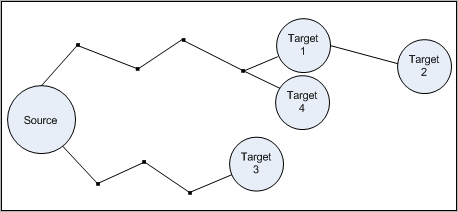Searching the Help
To search for information in the Help, type a word or phrase in the Search box. When you enter a group of words, OR is inferred. You can use Boolean operators to refine your search.
Results returned are case insensitive. However, results ranking takes case into account and assigns higher scores to case matches. Therefore, a search for "cats" followed by a search for "Cats" would return the same number of Help topics, but the order in which the topics are listed would be different.
| Search for | Example | Results |
|---|---|---|
| A single word | cat
|
Topics that contain the word "cat". You will also find its grammatical variations, such as "cats". |
|
A phrase. You can specify that the search results contain a specific phrase. |
"cat food" (quotation marks) |
Topics that contain the literal phrase "cat food" and all its grammatical variations. Without the quotation marks, the query is equivalent to specifying an OR operator, which finds topics with one of the individual words instead of the phrase. |
| Search for | Operator | Example |
|---|---|---|
|
Two or more words in the same topic |
|
|
| Either word in a topic |
|
|
| Topics that do not contain a specific word or phrase |
|
|
| Topics that contain one string and do not contain another | ^ (caret) |
cat ^ mouse
|
| A combination of search types | ( ) parentheses |
|
- Topology Query Language User Interface
- Add/Edit Calculated Relationship Dialog Box
- Add/Edit Compound Relationship Dialog Box
- Add/Edit Join Relationship Dialog Box
- Add/Edit Relationship Dialog Box
- Add Related Query Node Wizard
- Add Triplet Dialog Box
- CI Instances Dialog Box
- Conditions Preview Dialog Box
- Element Layout Preview Dialog Box
- Filter CI Instances Dialog Box
- Join Relationship Condition Dialog Box
- Layout Settings Dialog Box
- Query Node/Relationship Properties Dialog Box
- Refine Query Node Type Dialog Box
- Select Relationship Type Dialog Box
- Subgraph Condition Definition Dialog Box
- Subgraph Definition Dialog Box
- User Preferences Dialog Box
Add/Edit Compound Relationship Dialog Box
This dialog box enables you to define the connection between two query nodes using a compound relationship.
User interface elements are described below:
| UI Element (A-Z) | Description |
|---|---|

|
Add. Adds a compound definition. In Impact Analysis Manager, Enrichment Manager, and the Input Query Editor in DFM, it opens the Add Triplet dialog box. In the Modeling Studio, it enters a default compound definition in the table. Click the Edit buttons to edit the definition components. |

|
Delete. Deletes the selected compound definition. |

|
Condition. Enables you to edit the selected compound definition. In Impact Analysis Manager, Enrichment Manager, and the Input Query Editor in DFM, it opens the Edit Triplet dialog box. In the Modeling Studio, it opens the Compound Relationship Condition Definition dialog box. |
| Max steps |
The longest path allowed between the two CIs in the Default: 5 |
| Min steps |
The shortest path allowed between the two CIs in the Default: 1 |
| Relationship | The relationship connecting the two query nodes. |
| Relationship Direction | The direction of the relationship that indicates which query node is dependent on the other. |
| Relationship Name | The name of the compound relationship. |
| Relationship Restrictions |
Select an option to define how to handle relationships between identical query nodes or self relationships in the query results. A self relationship is a relationship that leads from a query node to itself. Note This list appears only when you select one query node or two identical query nodes.
|
| Show element in query results |
Select Show element in query results to include query results relating to a join or compound relationship. By default, this option is selected. When the check box is cleared, a Hidden in Query Results indicator
|
| Show full path between source and target CIs | If you select this option, then the query results display the actual names of the relationships that link the CIs and the full path between the source and target CIs. |
| Source | The required source query node. |
| Stop at first compound level |
Select this option if you want the system to stop looking for TQL query results once it reaches the first target in the path. In the following sample compound link definition, Depth is defined as 10 and Stop at first compound level is selected.
The TQL query results include the Target 1, Target 3, and Target 4 because they are all at level 1 (the first CI found in the path). Target 2 is not included in the TQL results because it is at level 2 (the second CI found in the path). |
| Target | The required target query node. |
We welcome your comments!
To open the configured email client on this computer, open an email window.
Otherwise, copy the information below to a web mail client, and send this email to cms-doc@microfocus.com.
Help Topic ID:
Product:
Topic Title:
Feedback:






 appears to the left of the relationship's name in the editing pane, denoting that any query results pertaining to the relationship are not displayed in the topology map.
appears to the left of the relationship's name in the editing pane, denoting that any query results pertaining to the relationship are not displayed in the topology map.
